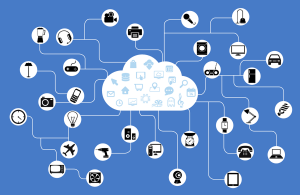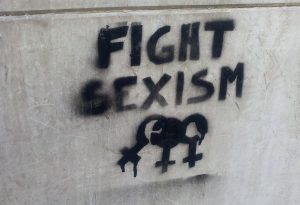
‘Internet et ses applications’ by Gregordy is licensed under the Creative Commons Attribution-Share Alike 4.0 International license.
Introduction
In recent years, the development of the Internet has continued to influence the lives of audiences, providing convenience and becoming more and more significant. In contrast, the Internet can also bring some prejudices. For example, hate speech is spread in social media, which can harm and negatively affect specific groups and marginalize them (Berners-Lee, 2020). The term “structural inequalities” can be defined as a situation in which one category of people is given an unequal status relative to other categories of people. This relationship is sustained and strengthened by the convergence of unequal relationships in decisions, opportunities, rights, roles, and functions. This multimedia essay will argue that the growth of the Internet is heavily influenced by structural inequalities and is a force that increases this inequality. It will be discussed from three aspects, the issues of sexism and racism on the Internet including the social platforms, the impacts received by social classes due to structural inequalities on the Internet, and how they contribute to structural inequalities in the development of the Internet.
Sexism, prejudice, and hate speech
Sexism is a topic of much discussion and concern in today’s society. This is not only present in the workplace, school, and life, but often on the Internet. Some sexists make offensive and abusive comments about women on the internet, which can be considered a serious structural inequality because it is a form of prejudice. One example of prejudice is an ad agency-directed campaign launched by the United Nations in October 2013. The “genuine Google searches” were used to alert audiences to the issue of denial of women’s human rights, the issue of sexism, and the ways in which discrimination is perpetrated. Auto-suggestions from a variety of women of color directly reflect the most popular searches in Google Search, and these auto-suggestions contain a range of sexist views. For instance, women should not have rights, work, or vote; women should not drive, be trusted, or speak in church; women should stay at home and in the kitchen and be slaves; women need to know their place, be disciplined, and controlled. The results of this campaign are incredible and show that search is a mirror that shines a light on what users are thinking. There are still all kinds of sexism and prejudice against women in this society, and some stereotypes make life and work difficult for women. Furthermore, the campaign also proved the point that the problem is not with the search engines, but with the users. It is some users themselves who are guilty of bias and discriminatory behavior, and this is a real problem (Noble, 2018).
According to Foster (2015), some sexists have made a lot of hate speech against women on social media platforms. They judge and shame women about their weight, body shape, and appearance, which is very uncivilized and rude. This is disrespectful to the victims and can also affect their mental health, leading to low self-esteem, appearance anxiety, and even depression. As a result, sexism on the Internet and the spread of hate speech have seriously exacerbated structural inequalities in the development of the Internet. This situation not only makes women vulnerable on online platforms but also exposes them to more prejudice in real life.

‘Fight sexism’ by Prof.lumacorno is licensed under CC BY -SA 4.0.
Racism and social media activism
Racism issues have been in the news in recent years, such as the issue of discrimination against African-Americans, Asians, and Aboriginals are common. Such bias can marginalize or disadvantage these minority groups or ethnicities, resulting in inequality in status, resources, or opportunities, such as jobs. This also happens frequently online, with incidents of social media activism ridiculing and satirizing minorities. This can be seen as structural inequalities, as such bias suppresses and harms the rights of minorities as civilians. According to Matamoros-Fernandez (2017), platform racialization is a product of liberal ideology and has dominated the development of the Internet from its inception. It uses social platforms as a medium to create and expand racist discourse. David (2020) argues that Australia is a country with a diverse ethnic group, with Aborigines included in the population. These Aborigines sometimes have been treated unequally and even discriminated against in their lives. A prime example of this is in the case of Australian soccer star Adam Goodes. This player fought against racism and had a very bright and distinguished record. Goodes celebrates the role of Aboriginal and Torres Strait Islanders in the domination of Australian soccer by performing an annual war dance on the field of play to celebrate Carlton’s goal. However, during the “Indigenous Round” of the 2015 Australian Football League season, his mimicry of throwing a spear in the direction of the crowd sparked heated debate among social media activists who deemed the dancing and spear-throwing hostile or offensive. Since then, Goodes has been subjected to a barrage of slander and insults on online platforms by racists who have even altered his Wikipedia photo to show a chimpanzee. These actions led to his early retirement and the cancellation of his social media accounts in 2016 (Matamoros-Fernandez, 2017). Every minority group and ethnicity has a culture that is exclusively theirs, and one cannot stigmatize and misunderstand the culture and beliefs of others because of one’s own prejudices, as exemplified in the case of Goodes. It is unfair that he was attacked and abused by racist remarks just because he performed a celebratory gesture of the aboriginals. It is thus clear that racism and social media radicalism can lead to great psychological and emotional trauma to victims. Matamoros-Fernandez (2017) points out that behind some seemingly “witty and humorous” posts are countless ridicule and insults, and some seemingly simple comments and remarks can cause irreversible psychological trauma to those who have been hurt. This can be the beginning of school violence or someone’s desire to end his or her life because of countless ridicule. It is unfair and wrong to make random accusations against others. For these reasons, this occurrence exacerbates structural inequalities in online development and will make life harder for minorities as prejudice and stigma against them increase on social platforms.

‘Placard Racism is Never Justified.’ by John Darroch is licensed under CC BY -SA 4.0.
Social class
Social classes are also affected by the structural inequalities of the Internet. In the mid-to-late-1960s, the counterculture movement took place. The working class did not have access to the leaders of the counter-culture movement at that time, which had an indirect impact on the present-day class divisions and the development of online culture. In addition, the working class blurred the personal and professional spheres and caused society to become polarized (Lusioli &Turner, 2021). Thus, this is a consequence of the structural inequalities that have influenced the development of the Internet.
Conclusion
To sum up, it could be seen that the development of the Internet has been largely shaped by structural inequalities, and it is a force for increasing such inequalities. Sexism and prejudice on the Internet, widespread hate speech, and the negative effects of social media activism on issues of racism all contribute to the structural inequalities in Internet development. Moreover, the polarization of social classes and societies is influenced by historical legacies.
Reference List
Berners-Lee, Tim (2020) ‘30 years on, what’s next #fortheweb’, https://webfoundation.org/2019/03/web-birthday-30/
David, H. (2020). Unmasking the racial contract: Indigenous voices on racism in the Australian Public Service [online]. Journal of Australian Indigenous Issues, Vol. 23, No. 1-2, Jun 2020: 109-114.
Foster, M. (2015). Tweeting about sexism: The well‐being benefits of a social media collective action. British Journal of Social Psychology, 54(4), 629–647. https://doi.org/10.1111/bjso.12101
Lusioli, A. & Turner, F. (2021). “It’s an Ongoing Bromance”: Counterculture and Cyberculture in Silicon Valley—An Interview with Fred Turner. Journal of Management Inquiry 30(2), pp. 235-242.
Matamoros-Fernandez, A. (2017). Platformed racism: the mediation and circulation of an Australian race-based controversy on Twitter, Facebook and YouTube. Information, Communication & Society, 20(6), 930-946.
Noble, S. U. (2018). A society, searching. In Algorithms of Oppression: How search engines reinforce racism. New York: New York University. pp. 15-63.